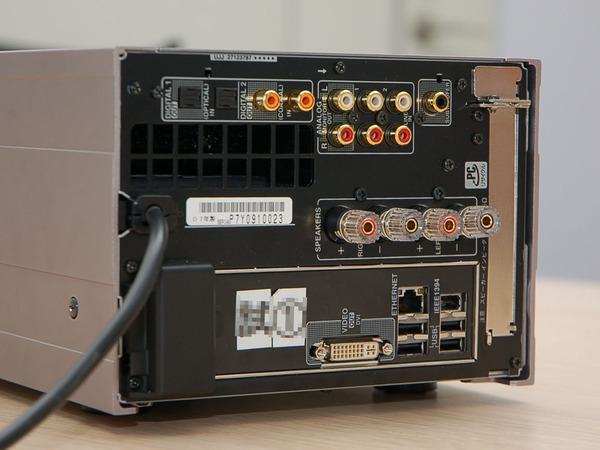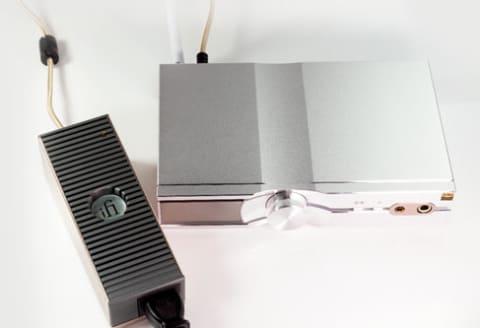Onkyo's "APX-2". The speaker behind is "D-312E"
"Personal computer is inferior to dedicated audio" Will such common sense continue to be common sense in the future?
The act of listening to music on a personal computer has become very common these days when the iPod is at its peak. However, listening to music with good sound is difficult. Meanwhile, Onkyo's HD audio computer "APX-2" is attracting attention. Apply the know-how cultivated in the development of single item audio and CD receivers to personal computers. Its selling point is that it is compact, quiet, and has enough power to drive even large speakers.
This time, I verified the sound quality at an audio store that handles high-end equipment. How far can personal computers come close to dedicated audio?
The solid weight of the housing makes it sound like audio.
First, let's take a look at the general specifications of the APX-2.

The OS is Windows Vista Home Premium. It has a 500GB hard disk and 2GB memory. The CPU uses Core 2 Duo T5500 (1.66 GHz), which is a power-saving notebook CPU.
The computer interface is DVI-I (HDCP not supported), USB x 4, IEEE 1394 x 1 (6-pin), Ethernet. The interface of the audio part is digital x 2 (optical 1, coaxial 1) / analog x 2 for input, digital x 2 (optical 1, coaxial 1) / analog x 1 / subwoofer x 1 for output. The speaker terminal is 2 channels, and although it supports banana plugs, it does not support Y lugs
The main difference from conventional personal computers is that the main unit is equipped with speaker terminals that support banana plugs, and speaker cables can be directly connected. The board and power supply of the digital amplifier are completely separated from the motherboard of the personal computer.
Chassis part (left) and sound card part with Mini PCI connection (right)
Preamp part (left) and power amp part (right). These are modularized and designed independently from the PC part.
The sound played on the computer is output as a digital signal from the Mini PCI-connected sound card to the amplifier, where it is D/A converted. The amplification section uses a PWM (Pulse Width Modulation) class D amplifier. It is characterized by high efficiency and high output even in a small space. APX-2 is a relatively compact housing with width 205 x depth 388 x height 155mm, but it achieves a maximum output of 100W x 2ch.
Measures to calm down in various places. The upper left is the HDD unit. As a floating structure, it is further shielded so as not to leak noise. Countermeasures such as sandwiching spacers as shown in the upper right and using cushioning materials as shown in the lower left are also taken.
The chassis has undergone thorough anti-vibration treatment, making it an excellent product even as a silent computer. It is made with attention to detail, such as adopting an HDD unit that adopts a floating structure and a 1.6mm thick chassis. I put the APX-2 up close to my ear while it was booting up, and it was as quiet as a laptop (noise level 22dB), except for the faintest fan noise.
Because it is equipped with two large transformers for the amplifier, the main unit weighs 10.7 kg. In this respect as well, it gives the impression that it is aiming for high-end audio. It is said that they are particular about how to tighten the screws, so it is not recommended that users access the inside of the housing. For this reason, please note that memory replacement is not supported.




